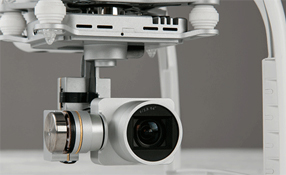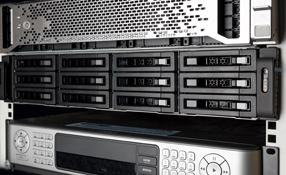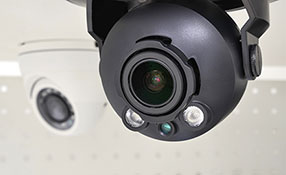Security integration is more than a buzzword in the hospital and healthcare vertical. Increasingly, it’s a necessity.
When creating a safe and secure healthcare environment, end users should look for solutions that not only drive new levels of security and business intelligence but can provide long-term value in the future. Specifically, Kevin Wine, Vice President of Marketing, Verint, says healthcare users are looking for systems that are:
- Open and scalable, and can easily integrate with other systems and sensors;
- Intuitive to use and manage to help keep the focus on better situation management;
- Comprehensive and automated to help operators align with standard operating procedures and reporting structures;
- Intelligence-driven to correlate data with other sources of security and operational data for more accurate and comprehensive risk profile.
Enhancing Security Efforts By The Right Means
Ensuring the safety of patients, staff and visitors is no easy task, and while it is challenging for security officials to predict, prepare for or prevent every incident from occurring on the premises, robust strategies and programs help these facilities achieve a higher level of situational awareness, says Wine. By improving security efforts with the right technology, protocols and procedures, hospitals are better equipped to ensure safety and security while driving new levels of business intelligence to ensure long-term viability in today’s market.
By improving security efforts |
Healthcare facilities today seek holistic solutions that address a wide variety of security and business needs, says Wine. Video surveillance is a force multiplier, helping mitigate risks. Video and other security sensors and communication systems (i.e., access control, video analytics, dispatch, nurse call, alarms, RFID, et.al.) also help enable users to realize new levels of prevention – earlier detection is vital to prevent incidents.
Situational Awareness Solutions
But all of these valuable data points cannot be fully realized without correlating information from various solutions together, says Wine. Situational awareness solutions help hospitals gain a full picture of a security situation, improve communication among stakeholders, and streamline reporting to allow officials to effectively manage a situation on a more proactive basis. All of these needs are driving healthcare organizations to seek out solutions and programs that can provide value beyond feature sets, and can help drive new levels of security and business intelligence.
Wine contends that, by integrating data from various sources into a single command-and-control platform, true situational awareness can be achieved. This comprehensive approach helps enable faster and more effective response to support a high level of safety to employees, patients, visitors and the overall community.
“Situational awareness solutions automatically combine critical data points from multiple systems and sensors, allowing operators to understand what is happening in real-time through one intuitive interface,” says Wine. “We like to think of this approach as a single pane of glass – helping enable officials to quickly and effectively identify risks, manage situations and thoroughly investigate. Bringing all data points into one platform helps allow for early detection of threats, which can also be used to initiate better planning, timely response and better decision-making.“
 |
| The healthcare vertical is moving toward a complete solution that integrates nearly any system using a facility’s network |
Integration: Access Control And Beyond
Access control is an important aspect of integration in healthcare settings. Hospitals must support affiliated doctors who need to carry multiple badges for all the locations they visit, for example. Over time, administrators may want to integrate access control with visitor management, or add video surveillance and other technologies. This can be difficult to accomplish with legacy systems, which are vulnerable to security threats and can’t easily be upgraded to new features and capabilities. In contrast, the latest physical access control system (PACS) system architectures are based on dynamic technologies, making it significantly easier and less expensive to upgrade them.
“Today’s solutions enable healthcare organizations to achieve a versatile PACS that protects everything from hospital doors and storage areas to the cloud and desktops,” says Sheila Loy, Director Healthcare Strategies, North America, HID Global. “With proper planning, healthcare institutions will be able to preserve investments in today’s physical access control credential solution as they seamlessly add new capabilities in the future,” she says. The result is a fully interoperable, multi-layered and highly adaptable security solution that spans the organization’s networks, systems and facilities, and has room to grow, evolve and improve over time.
Healthcare institutions will be |
The latest PACS architectures support new applications such as infant protection systems, and biometrics in sensitive areas such as laboratories and research centers. There are also opportunities to “do more with the card,” says Loy. Hospitals can offer physicians, nurses and staff one card for accessing the emergency room and pharmacy, and for visual ID verification, time-and-attendance logging, payroll transactions, and cafeteria purchases. This simplifies life for cardholders while centralizing and streamlining management.
To protect information, access control systems now also deliver the ability to “tap” in and out of computer applications, eliminating complex passwords and password fatigue where it can require 20 or more logins each day in order to access the hospital’s enterprise data and services. Instead, the user simply taps his or her ID card to a laptop, tablet, phone or other NFC-enabled devices to access network resources, cloud apps and web-based services. It’s easier and more secure than passwords, and faster and more seamless and convenient than dedicated hardware one-time passwords and display cards or other physical devices. Plus, there is the added benefit of using the same card that opens doors to also access data and cloud-based applications.
Integration With Other Systems
A complete solution that integrates nearly any system that lives on or uses a facility’s network is ultimately what the healthcare vertical is moving toward, says Jason Ouellette, Product Line Director – Access Control, Tyco Security Products. “At Tyco Security Products, we are offering this kind of holistic approach by integrating our C-CURE 9000 access control platform with video, intrusion, duress notification and infant abduction technologies together and adding license plate recognition, biometric identity management, NFC and BLE, visitor management and home automation interfaces and capabilities,” he says. “All of these systems coming through a single pane-of-glass view give operators more to see and react to.
“We are hearing more and more from customers across industries that they want to be able to use their security systems and devices for more than just security: they want added value,” says Ouellette. Many want to use access control, video surveillance and other data sources to assess their business operations and/or workflows with the goal of improving efficiency.
“I think we’ll also see more edge controllers and further development of mobile technology capabilities,” he adds.
 |
| We are going to see wider adoption of electronic access control onto almost every door in healthcare facilities |
Complete Security Integration
Infant abduction systems like Elpas and Hugs can now be connected to access control systems, says Jim Stankevich, Global Manager – Healthcare Security, Tyco Security Products. This is significant, and the integration among these systems will no doubt grow, as this makes infant abduction very difficult. A real world example is if an infant is taken without authorization onto an elevator. If this occurs, an alarm can be sounded, and a hospital-wide alert can be dispatched over radios and over the facility’s public address (PA) system in seconds. “This growing level of automation is one of the things I expect will continue to develop in the future,” says Stankevich. “These systems integrated into the Lynx duress/notification system allow for a wide range of notification options.”
"These end users need a way to |
Also, facilities require increased integration with today’s video surveillance and video management systems from their access control solutions, and there’s an additional push toward integrating human resources and other event management and directory software tools as well, adds Stankevich. “These end users need a way to grant permissions in a way that not only saves time and energy on manual input, but also makes changing permissions easy and efficient,” he says. “This is especially paramount for large-scale enterprise organizations, such as a hospital campus, that can span multiple geographic locations.”
Access control can be integrated with other systems, too. “The continuing evolution of network technologies and our interconnected world has transformed access control systems from standalone solutions into a vital part of a more robust, highly integrated system that allows users to utilize a single control platform to monitor the status of a facility,” says Robert Laughlin, President, Galaxy Control Systems. “We expect that advanced access control solutions will be integrated with patient information, identity management, video surveillance, medicine storage and distribution, parking and other systems, all of which provide information and intelligence in the form of data that contributes to the emerging model of predictive analytics. The actionable intelligence that will result from this analysis will help move security from a reactive to a more proactive function.”
Wider Adoption Of Electronic Access Control
Tighter integration between physical access control systems with specific hospital-based systems such as mother and baby alarms, asset location technologies and robotic vehicle systems are likely advances that we will see adopted more often, agrees Dave Ella, Vice President of Product Marketing, AMAG Technology.
“We are going to see wider adoption of electronic access control onto almost every door in healthcare facilities through the adoption of a new generation of locks that are wire-free and Wi-Fi-based, but that form part of the overall access control system,” says Ella of AMAG.
AMAG also sees that frictionless access – in which no physical contact needs to be made with a card or card reader – will assist in the control of healthcare-associated infections.
Read Part 11 of our Security in Healthcare series here














































